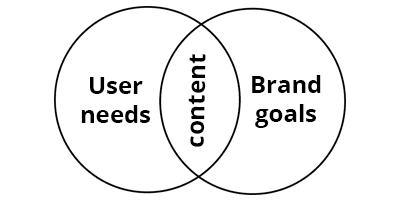Write Your Best Blog Posts!
Any good SMAM (that’s Social Media Account Manager in our world) will tell you that a successful blog can be a huge key in your online and social media presence. We’ve discussed the many things a blog can do for your business before, but now we’re going to analyze the building blocks of this multifaceted strategy: the blog posts themselves.
Blog Titles
These can be a starting point, but more often become the last thing added to a post. A good title is calibrated to maximize the SEO of your blog post, but doesn’t sacrifice style. It should be eye-catching, and make reader want to dive into the content of the post. Ask a question, create a call to action, or reveal what comes next. Is your post in the form of a list? A how-to guide? These crucial details will give readers an idea of what to expect, which will draw them in to read the rest of your post.
The Content
We talk a lot about content creation here at Infinite Reach. Looking for individuals within your target audience, enhancing your style for maximum SEO, and adapting to the jargon and norms of a client’s industry are some of our strengths. It takes a special blend of readability and new ideas to really make readers really think when they come across your blog. Every post you add should reflect this balance.
Every blog post and its content should also follow a few general guidelines. It should be free of grammatical errors, should be stylized for your target audience, and should be different from the content of your previous post. This last part is crucial. Variation will ensure that readers continue to return to your blog. Don’t use the same type of post or subject matter for consecutive blog posts (ie: don’t have two “how to’s” or listicles in a row; alternate instead). Avoiding monotony will keep your current audiences engaged and help to draw in new readers with each installment.
Brevity
Keep your blog posts short and simple. An in-depth article or guide can be a part of your strategy, but readers coming to the blog for short-form content will lose interest if they come across a text wall. Stick to the relevant facts and examples, and be sure you stay away from “fluff.” This article from copyblogger.com sums it up well: “don’t use more words when fewer words will do just fine.”
Trends
In the ever-changing online world, it’s important to keep up with trends and hot topics. These can be everything from humorous memes to breaking news stories. Fresh ideas will show your audience that you pay attention to the same things they do. But be wary; too many “hot takes” will distract from your brand, and forcing the joke or reference will come off like a gimmick. Make sure that the trends you address fit within your brand’s scope, so you can stay relevant instead of reaching too far outside your potential customer base.
Non-verbal Content
Images, videos, and other non-verbal content can really strengthen your blog posts. We’ve recently discussed on our blog how graphic design and communicating visually can enhance your brand’s storytelling power.
When choosing images and videos, it’s important not to settle for any old stock images. If you come across an image—even a perfect one for your post—in a similar post by your competitor, don’t use it. You want your images to stand out as much as your words.
Similarly, videos and links to outside articles and content should be thoroughly vetted. Read the articles fully and watch videos to the end, lest you end up quoting a piece that ends up refuting the central claims of your blog post. You must imagine that everyone reading your blog will click on every link, watch every video, and peruse every image you add with scrutiny.
With these guidelines in mind, it’s time to start thinking about how to really harness the power of blogging. Contact us at Infinite Reach today to get started!











